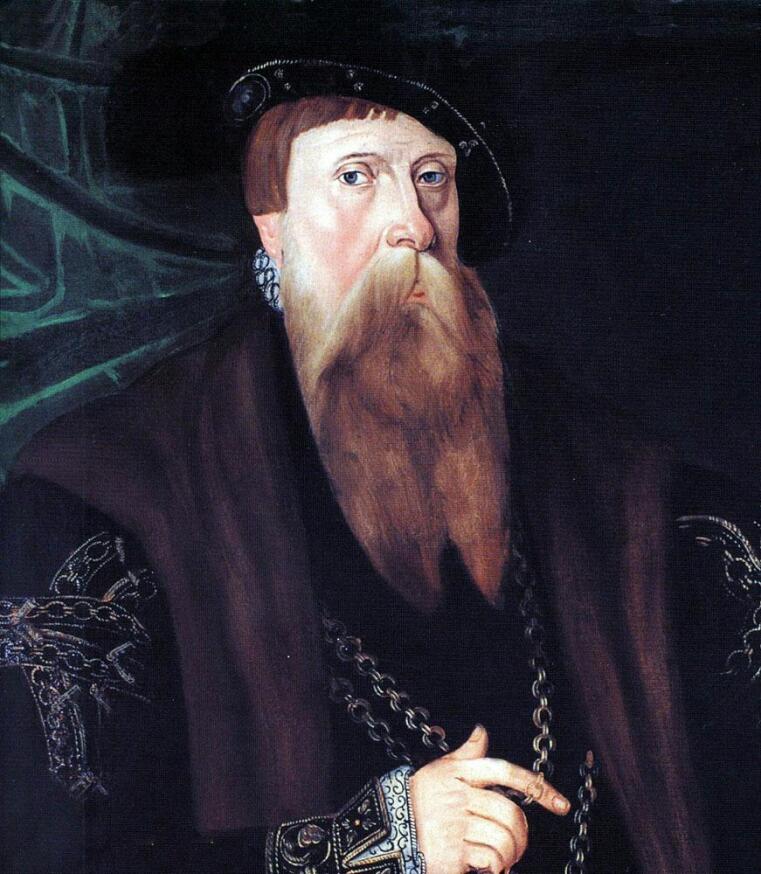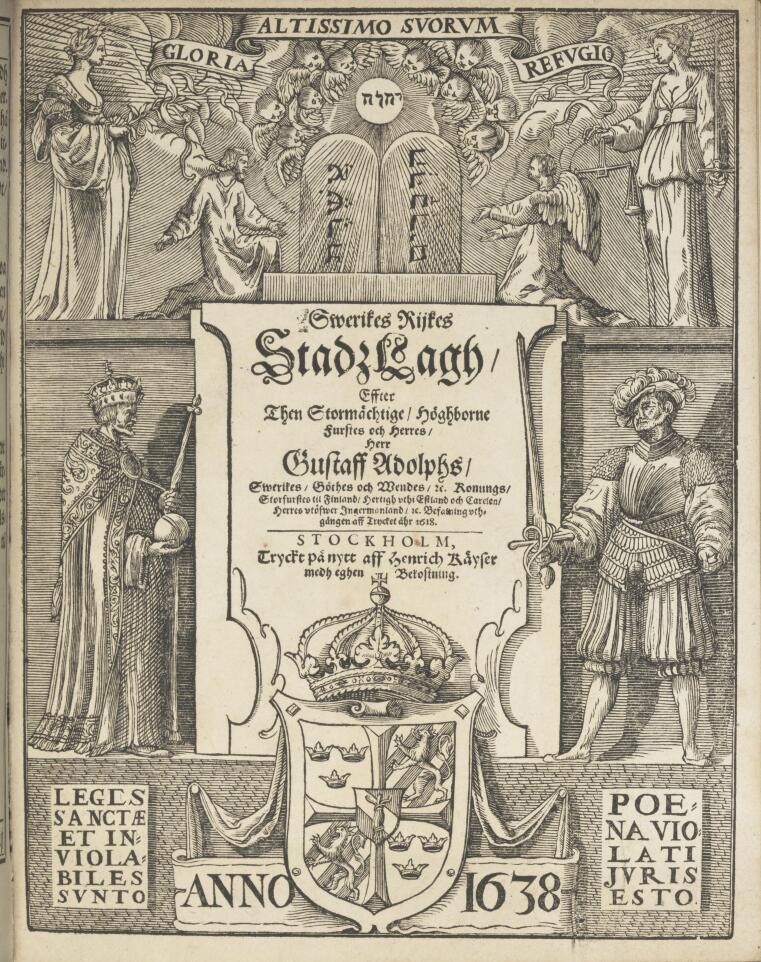“A period of great importance for state-building”
Interview with Mia Korpiola about the legal reforms under the Vasa kings

Legal historian Mia Korpiola has researched a turbulent phase of Swedish history at the Käte Hamburger Kolleg. It begins with a bloodbath in 1520 and ultimately leads to the Thirty Years' War. In between, we see the rise and flourishing of the Vasa dynasty, newcomers to the European society of princes, who intervened deeply in the legal and social structures of the country in order to secure their newly acquired position. It is probably little known that the Holy Roman Empire served as an important role model in this process. In the interview, Korpiola explains why the Vasa resorted to the law of the German lands and the Empire, what steps they took toward greater legal standardisation, and why this was at least partially successful in the end.
Professor Korpiola, you investigate the reception of the ius commune and foreign law in Early Modern Sweden. Why did it make sense for you to advance your research at the Käte Hamburger Kolleg in Münster?
The first obvious reason was that we – my husband Heikki Pihlajamäki and I – learned about it through Peter Oestmann. We had been attending a conference in Münster organised by him over ten years ago. He also came to Finland and talked about this opportunity, of course knowing our research themes would suit the Kolleg. It is not often one has the opportunity that both can apply as researchers and it is not just one who has the position and the other is just an appendix and stays at home.
Also, I have already had experiences of interdisciplinary institutes like the Helsinki Collegium for Advanced Studies, and I find it very stimulating. As a legal historian one has to teach so many topics and must be a bit of a generalist. I think it is very useful to be stimulated with different topics that really build one’s general view on the development of legal history in Europe. I really have profited a lot here. Finally, it is great that one can concentrate on one’s research and have someone else take care of the ordinary business at the university. Actually, I see the Kolleg as an oasis.
Your project covers the period from 1520 to 1620. What happened in Sweden during this time?
It was a very turbulent time because Sweden had been part of the so-called Kalmar Union ever since the late 14th century, which basically was a personal union of Denmark, Norway and Sweden under one ruler, namely the Danish king. The period was turbulent in the sense that Swedish political life was divided between two fractions, the pro-union party who favoured the Danish rule and the counter-union party who wanted to manage their own affairs. There had already been decades of uneasiness and rivalry between the parties but then, in 1520, Christian II of Denmark was crowned in Stockholm. The third day after the coronation he started the so-called Stockholm Bloodbath in which about 80 persons were executed. That was the beginning of the end of the Kalmar Union which eventually brought to the throne King Gustav Vasa.
The Vasa family was one of many aristocratic families and Gustav Vasa’s father and his brother-in-law were executed in the bloodbath. But he himself escaped and became a leader of the anti-Danish, or anti-union party and after some warfare they managed to take the power and push away the forces of the union king. This is when Gustav Vasa became the figurehead and later the king of the new Swedish Vasa dynasty.
At the same time in Germany, Martin Luther had started his reformation and in 1527 Sweden became the first realm outside the German lands to take the Lutheran faith. At the Diet of Västerås the king started passing acts that reduced the power of the church and took away its riches, whereas the doctrine was only slowly consolidated.

So, we see the rise of a new dynasty and the establishment of a new faith. What did this mean for the development of law?
Generally, the medieval laws continued in force. But of course, having a resident king and a new dynasty meant that there was a more hands-on sense of governance. The dynasty was poor and Sweden had no treasury of its own because all the money had been going to Denmark. So, Gustav Vasa had to find money somewhere else and the church was one way of getting it. The whole fiscal governance had to be reformed. For example, Gustav micromanaged all the crown bailiffs, who collected money from the provinces. He had to build the Swedish crown administration more or less from scratch.
Would you say that the innovations in law and administration were based on the king's desire to secure his newly acquired position?
Well, the reform actually started with statutes. There were a number of medieval statutes and ordinances, but the whole concept of “policey” appears in this period. The German imperial legislation was to some extent influencing the Swedish legislation at that time. For example, I think I have discovered a link between Swedish concerns for swearing an oath and what happened in Germany in the Reichsordnungen, but I really haven’t had enough time to go deeply into that.
Another aspect that was very urgent for King Gustav Vasa was the fact that he lacked competent staff in the central administration. He needed people who could write decent letters to both Swedish and Danish recipients. But he also established a German chancellery, because he had to take care of all the diplomatic correspondence with German princes. And he needed people who knew the continental law. It took him a lot of time to be taken seriously at the diplomatic tables. In Germany, for example, the Hanseatic towns had learned lawyers by the fifteenth century. So, Gustav Vasa tried to recruit doctors of law for his diplomatic service because he was lacking such experts, which made him the underdog even in negotiations with the Hanseatic league.
The big problem was that Sweden did not have a functioning university at that time. The University of Uppsala had been established in the 1470s but it had had very little teaching in law and soon stopped working altogether. So, basically during the whole 16th century, anyone who wanted to study law at a university had to come to Germany.
And these learned lawyers then brought German law to Sweden?
Yes. For example, there was Gustav Vasa’s so-called German period when he had recruited a chancellor from Frankfurt am Main, Conrad von Pyhy, who brought German influences to the Swedish legal system. The Reformed and Lutheran church ordinances, for example, were used as models for the Swedish church ordinances, the Reichsordnungen for some Swedish statutes.
Another thing that came from Germany were the so-called Hausgesetze, dynastic laws. Gustav Vasa had turned the Swedish electoral kingship to a hereditary kingship, which was obviously a big change. The future of his sons and daughters was arranged in a package of laws regulating what their position would be. He got to know this through his first wife, Katharina von Sachsen-Lauenburg, with whose family he had to negotiate a marriage contract. There was nothing like that in Sweden before.
So, we have some sort of legal transfer from Germany to Sweden. Would you describe this process as a unification or standardisation of law?
No, because at the same time Sweden was also expanding overseas. For example, when Ivan the Terrible started a war against Livonia, the Estonian nobility turned to Sweden for support against the tsar. I think it was in the 1560s when the Estonian nobility made an oath of allegiance to the Swedish crown. So, Sweden started its territorial expansion which then continued to Livonia and to German territories as well during the Thirty Years’ War. That brought Sweden in contact with totally different legal cultures.
Also, this was the beginning of certain trends of feudalism. Basically, the Swedish nobility had been serviced-based. Anyone who could equip a horse and a rider for war could acquire tax exemption and a noble status. But then, in the 1560s, hereditary counties and baronies were introduced. There were lots of German, but also Estonian and Livonian noblemen coming to the king’s service and they expected things to be the way they were used to. But even though the system became more diverse, the crown wanted to keep all the threads in its hands and it had certain methods of creating unity.
"Printing was a way of creating more uniformity and harmonising the country."
What kind of methods were those?
Well, as I mentioned the medieval laws had been there since the mid-14th century, King Magnus Erikson’s laws, one for the countryside and one for the towns. But there were different versions, for example the law for the countryside had been reformed in 1442. Both versions were used at the same time. Besides, they were copied from manuscripts and there was no master manuscript. So, during the Vasa period the royal chancery started to spread the 1442 version. Also, in the beginning of the 17th century King Charles IX started to reform and update the medieval law, an attempt that failed because of political reasons. But then the king printed the law for the first time and this became the one version that everyone was supposed to use. During that period, a judge was usually a nobleman without university training, complemented by a peasant jury. All they had was the law book. So, printing was a way of creating more uniformity and harmonising the country.

Moreover, legal practise also varied, not only because of the different law books but also because the local courts had the right to arbitrate and take the circumstances into consideration. But even this changed during Gustav II Adolf’s reign when, in 1614, he established the first royal appellate court in Stockholm, which supervised all the other courts. This was the Svea Court of Appeal, which became a permanent institution.
Whenever there was a difficult case the Court of Appeal turned to the king, who was the supreme authority in all matters legal. For example, there was no law against sodomy, so the king would be asked how to deal with those cases. And it was also the king who banned languages other than Swedish at court at the end of the 17th century. So, we see the creation of a somewhat proto-nationalist legal identity that is different from other cultures.
This leads me to my final question: In your opinion, what is the significance of this period from the early 16th to the 17th century? Would you say that the Swedish state was born during this time?
I think it was a period of great importance for state-building. The dynasty needed to acquire money from somewhere which is why they had to reform the whole system of governance. They wanted to have a modern functioning system and looked for German examples. They wanted to have officials who had been trained in foreign courts and chanceries and knew the system. The same goes for the military which was heavily dependent on foreign experts. It was a necessary, but a conscious process. Sweden was impoverished by the wars. Also, the establishing of the Svea Court of Appeal was a necessity of war. The king established it to take care of all the boring legal business while he went abroad and served Mars across the sea. So, the war helped to create the early modern Swedish state which became more modern than, for example, the state of Denmark that lacked the same incentive.
The questions were posed by Lennart Pieper.

